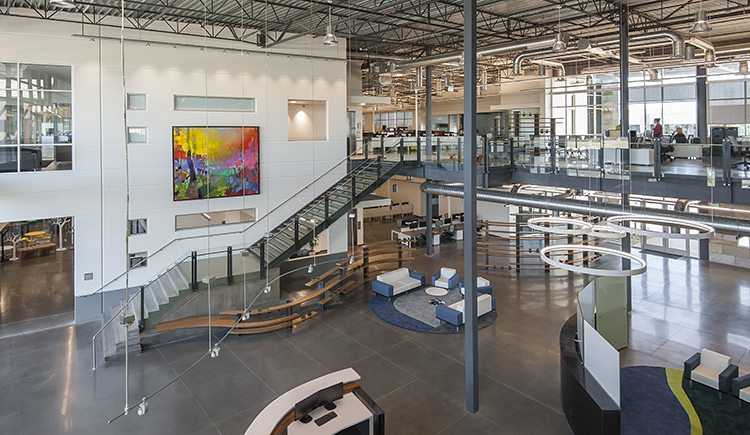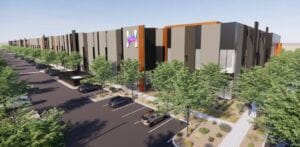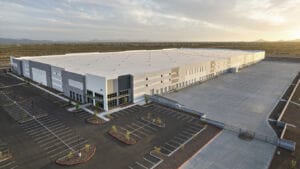As a leading global association for corporate real estate and workplace professionals, CoreNet Global consists of over 10,000 members worldwide, including 70 percent of the Fortune 100 and nearly half of the Forbes Global 2000.
Since it was founded, the mission of CoreNet Global’s Arizona Chapter has been to connect groups of professionals, end users and service providers in order to advance knowledge, promote personal excellence and add value to each individual and their respective enterprises.
To do so effectively, the corporate real estate association facilitates and sponsors a variety of diversified programs that provide members with educational and networking opportunities.
With that in mind, we asked four local members to share their thoughts and insights on Arizona’s commercial real estate market.
What trends are you seeing in the Arizona market?
Keyvan Ghahreman: I see continuing trends toward densification, and communities paying a lot more attention to issues such as walkability and live-work-play. This is also the most upbeat I’ve seen our market in a long time, but the fundamentals seem much healthier than in years’ past.
Lindsay Moellenberndt: Smaller ancillary businesses that service the e-commerce fulfillment/distribution market have been thriving, which has led to a lack of quality inventory, spurring the industrial development craze. The inventory is drastically shrinking in the 10,000-50,000-square-foot industrial space. We’ve seen an increase in activity and foresee it becoming a common practice.
Tyler Gentry: The biggest trend that continues to make Arizona one of the hottest markets in the U.S. is our growing workforce to meet the needs of more advanced manufacturing, financial services, insurance and more tech companies.
What’s the biggest commercial real estate project, deal, announcement or story that caught your attention in the last year?
LM: The 618,000-square-foot deal signed by UPS solidifies Phoenix as a distribution hub in the Western U.S. and it’s going to further open the door for e-commerce facilities to migrate to Arizona. Liberty Development leased its entire building in three years when it was initially planned to be completed in 10. Companies such as Carvana, DriveTime and Centene have all relocated its operations there.
KG: The new Amazon campus stands out in my mind, mainly because of its sheer scale. It’s interesting to see how Greater Phoenix and competing markets position themselves to win this deal. For a deal of that size and profile, a market needs to meet certain thresholds like livability and workforce pipeline. It seems like there are a good deal of markets willing to “give away the farm” to attract business, and I’m happy our market is not one of them.
TG: It’s not one single real estate project, but rather a movement that’s been evolving in the last five years, and it’s happening in Tempe. A new “city-center” for Greater Phoenix has emerged because of its location, access to ASU and work/life amenities.
What are the driving factors for companies relocating or expanding to Arizona?
Mark Singerman: The primary considerations include but are not limited to: favorable hiring opportunities; proximity to existing customers; lower cost of living; low utility costs; good schools; lower costs for all types of insurance; central location of a major airport; good infrastructure for transportation and communications; absence of natural disasters; and ease of doing business in general.
KG: Compared to 10 years ago, our economy is much more diversified and communities have developed a real sense of place. We’re still witnessing Downtown Phoenix’s transformation with the continued growth of ASU and UA, an explosion of residential options, and the proliferation of dining and entertainment opportunities. With our relatively low cost of living compared to competing markets, the quality of life here is hard to beat.
LM: I don’t think we give the Arizona Commerce Authority, Greater Phoenix Economic Council and our local economic development teams enough credit. Through their efforts, we have gotten the word out to companies throughout the world. The cost of living, affordable real estate, accessibility, a large workforce, university partnerships, freeway infrastructure, the arts and culture, craft breweries, spring training games all play into making our community that much more attractive.
TG: The most significant factors are workforce availability, our pro-business environment and an unmatched quality of life coupled with a low cost of living.
With so much growth in the West Valley, what is necessary for commercial office users to take a leap of faith and relocate there?
TG: I believe all we need is one large well-known brand to make the move to lay down roots. The key is to find an employer that aligns with the West Valley’s workforce. In fact, nearly 70 percent of West Valley residents commute to the East Valley for work. If given the option, employees want to work closer to home.
MS: Most jobs in the West Valley are manufacturing, warehouse and distribution, healthcare and military related. However, the new South Mountain Freeway/Loop 202 extension may facilitate more office development in the West Valley. We wouldn’t be surprised to see office development in close proximity to the new freeway interchanges at major east/west arterial roads in the West Valley after the freeway opens in late 2019.
LM: The workforce demographics supports the notion of why companies should relocate there. Many West Valley residents were previously working in the central core of our community, traveling an average of 25 minutes each way. Now that more companies are moving, our team at Cresa believes that the West Valley residents will opt to select an employer that is closer to home.
What will be the next big disruptor to the commercial real estate market?
LM: The Industrial Air B&B Model often referred to as “the Flexe Model” that allows for warehouse operators to lease out excess space is a trend happening across the country. Our team at Cresa believes it’s just a matter of time for that model to appear in our local market.
KG: Family formation of the Millennial generation could be a major disruptor. This generation, I think is largely responsible for trends like urban densification and live-work-play. As they get married and have children in increasing numbers, I don’t think we have a clear sense yet of how the market will respond in terms of development. Will they tend to remain in denser areas, will they search for more space, or will development in urban areas adapt to retain these families?





